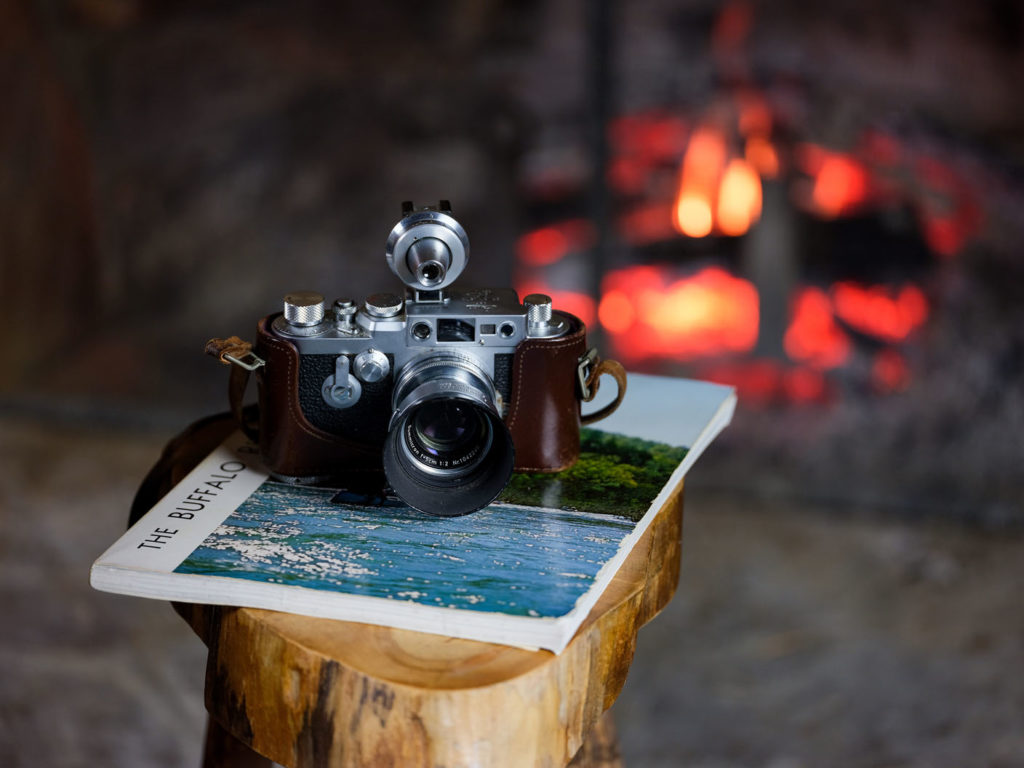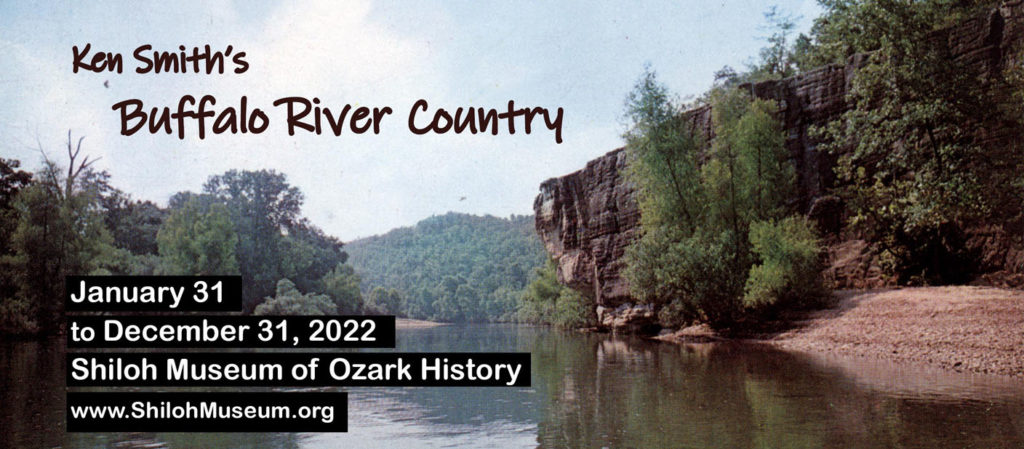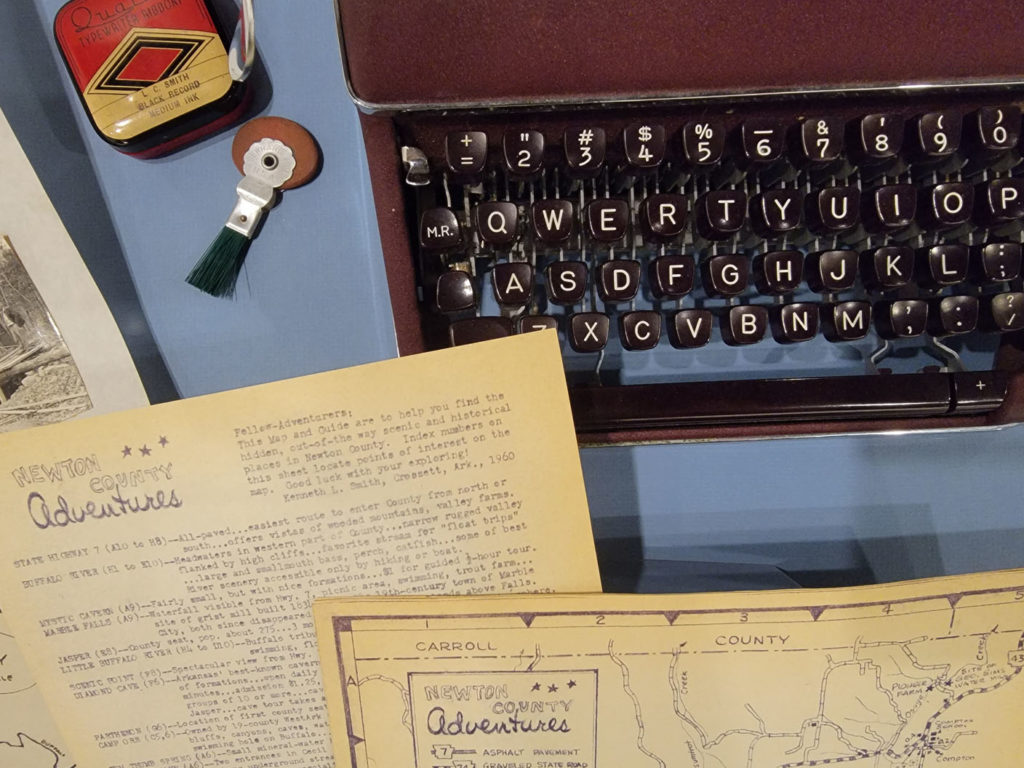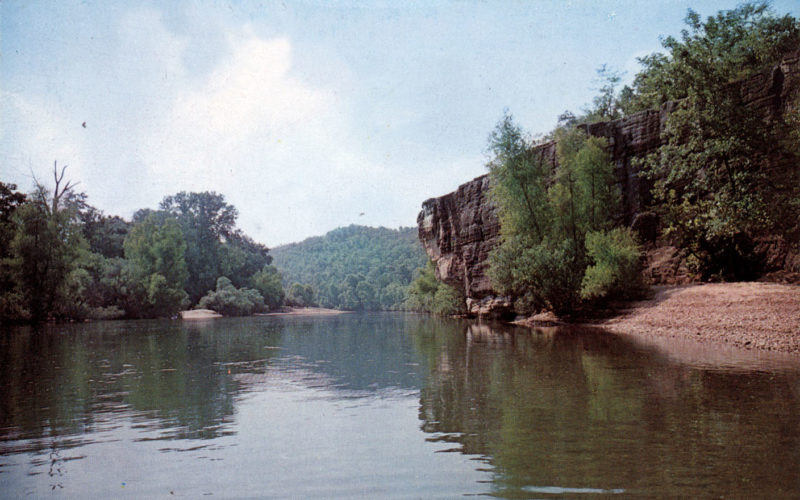April Wallace
awallace@nwaonline.com
When the staff of the Shiloh Museum of Ozark History considered the Buffalo River’s 50th anniversary, they knew they wanted to commemorate it. But since so many other organizations were celebrating too, they thought carefully about what angle to approach it from to avoid much overlap, says Angie Albright, Shiloh Museum director.
“With a lot of places honoring this anniversary of the Buffalo’s federal designation, we thought ‘How are we going to do it (unlike) everybody else?’”

In the end, they selected a variety of photographs and artifacts surrounding Ken Smith, whose 1967 handbook “The Buffalo River Country” was instrumental in preserving the river and helping it earn its federal river designation in 1972.
“Ken Smith’s Buffalo River Country: A Special Exhibit” opened at Shiloh Museum this month and will continue through December. It includes 24 photographs, 22 of them taken by Smith, and a variety of artifacts including the tools, maps, camera and even the boots he used while collecting information.
“He had a unique set of talents that were just the right thing in the right moment,” Albright says. “He explored the watershed to document it. Like a historian, he wrote it all down and had a gift for photography and a love for nature.”
Smith was formerly a civil engineer for the National Park Service, so he was able to lend a technical perspective of the river as he surveyed the area and reflected it through metrics but also illustrated its strengths through images taken on his Leica camera and compelling prose he wrote.
“His notes and documentation and things are remarkable,” Albright says. “He’s just a gifted writer and documented [it] in words and photos.”

Susan Young and Marie Demeroukas, two recently retired Shiloh Museum employees who are now working as volunteers, dug through hundreds of Smith’s photos and curated a collection of about two dozen that represent the rest of the work.
Some might be what you’re expecting, Albright says, with beautiful vistas, waterfalls and a few photos that have people in them. A couple more have buildings and structures representative of vernacular architecture, some of which have stonework.
Albright’s personal favorite is a photograph of a shed that’s a convenience store. It has a big red Coca-Cola sign on it, and a woman standing out front is also wearing red.
“It just comes up off the photograph, this shabby shed that’s colorful and interesting and not what you’d expect,” Albright says.
Among the other structural shots is a cabin with a natural stone chimney. It’s interesting for its show of Ozark architecture, but Albright says the angle is beautiful and gives the viewer a good sense of what life must have been like for people living in the late 1800s.
This particular exhibit is a unique one for the history museum since the objects on display are from a person they can still call. It’s one of the few times they have a direct line of connection like that, Albright says.

Friends of the museum who are close to Smith connected Albright and her staff, which is how they came to borrow his boots, notes and surveying equipment.
Two of the photos are of Ken Smith himself, one from his earlier years and one more recent portrait taken by Don House. The museum also produced a 12-minute video interview with him where they were able to ask him various things directly, including what drives him to nature and what he loves about the Buffalo River.
Among the artifacts on display is a level that Smith called “the determinator,” his manual typewriter, two backpacks from his explorations, notes and calendars, a couple of his original articles and books, some surveying utensils, as well as the precision pencils and maps.
A map of the Buffalo River watershed is on one wall of the exhibit with Smith’s photos laid on top to orient where they were taken. It should give viewers a better sense of how many counties the area covers.
That mix of artistic and precise scientific expression makes the exhibit effective and engaging, Albright says, like for instance when some of the photographs and artifacts are presented next to large scale rendition of a poem Smith wrote about loving the land.
Albright hopes it will add a sense of variety to all the ways that the Ozarks can be experienced, allowing people to learn about the life you can find in the middle of nowhere, and that it’s not just a beautiful place we’re surrounded by, but a place full of people, nature, archeology and waterways.
__
FAQ
‘Ken Smith’s Buffalo River Country’
WHEN — Through December; museum hours are 10 a.m.-5 p.m. Monday-Saturday
WHERE — Shiloh Museum of Ozark History in Springdale
COST — Free
INFO — 750-8165 or shilohmuseum.org
__
FYI
The Shiloh Museum of Ozark History hopes to have a special event for “Ken Smith’s Buffalo River Country” in the spring with an interview or short film and an opportunity to talk with people in the Ozark Society, which did a lot of work to preserve the Buffalo River.
For more information, keep an eye on shilohmuseum.org.



